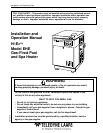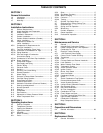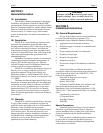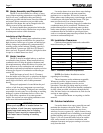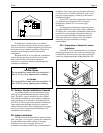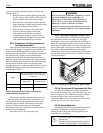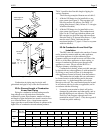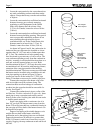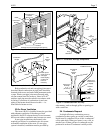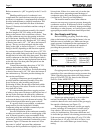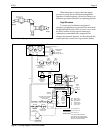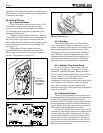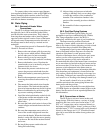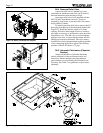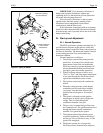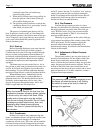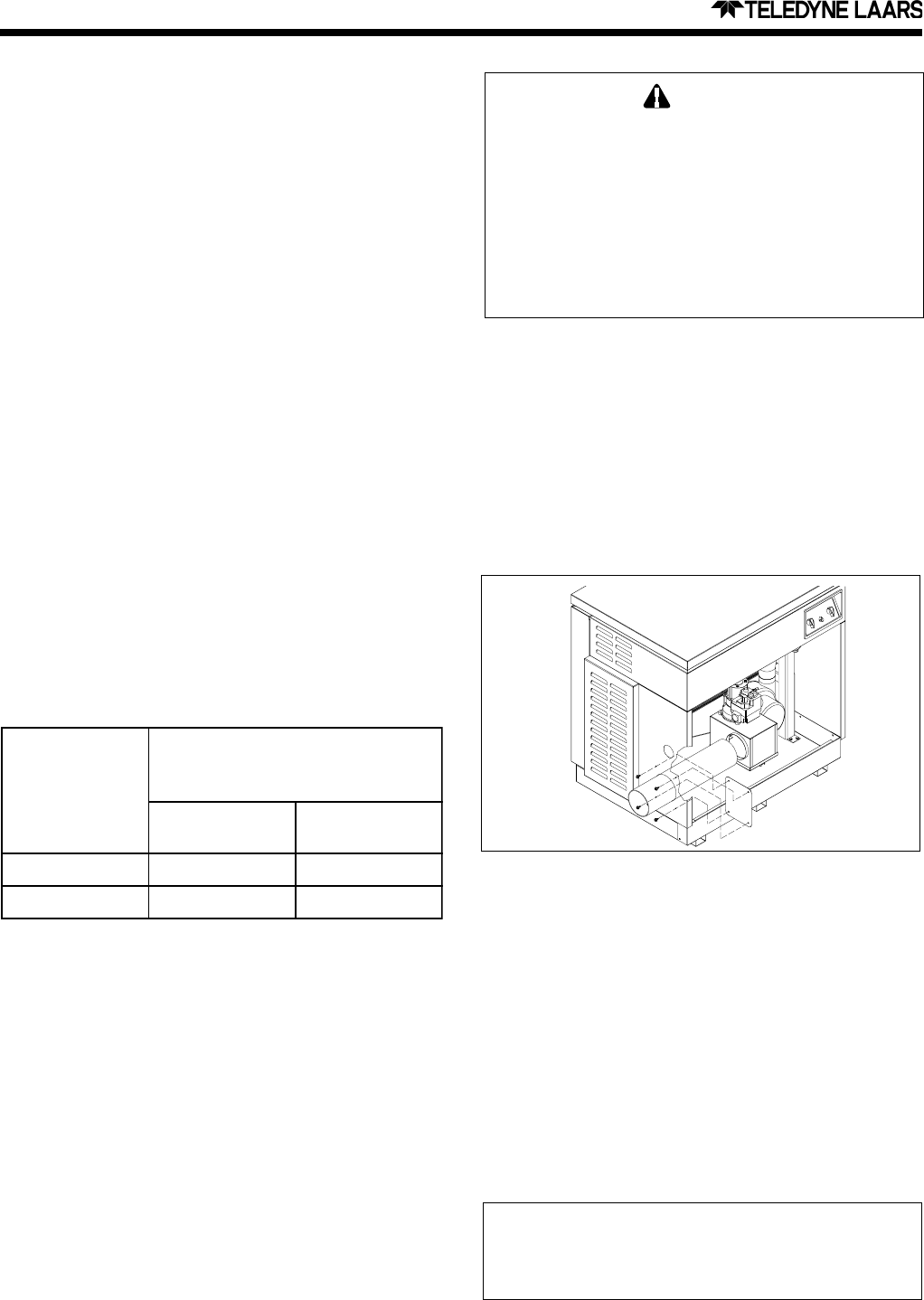
Page 4
2G-3a. Connection of Combustion Air Pipe
A collar for combustion air pipe connection is
provided in the heater at the inlet of the filter box. As
shown in Figure 4, the combustion air pipe is routed
through the side of the heater to the filter box
connection. Remove the cover plate from the left side
panel to provide access for the air pipe.
2G-3b. Piping Materials
Vent piping must be corrosion resistant because
combustion condensate is usually present on its
internal surfaces. Only the following materials are
acceptable for vent piping:
PVC Class 100, Class 125 or Schedule 40
CPVC Schedule 40
29-4C
®
Stainless steel venting materials listed for
venting of condensing gas-fired appliances.
29-4C
®
is a trademark of Allegheny Teledyne.
WARNING
Do not store any chemicals, cleaners, or other
corrosive material near combustion air
openings or in the room. Avoid location of
dryer vents in the vicinity of combustion air
openings. Failure to prevent corrosive
materials from mixing with combustion air can
result in reduced heater life and unsafe heater
operation.
2G-3. Two-Pipe Installation (Direct Vent)
This section specifies installation requirements
for combustion air and vent piping for “two pipe”
installations. A two-pipe system provides isolation of
the Hi-E
2 combustion system from the space in which
the heater is installed. It has not only a vent pipe, but
also a combustion air pipe to provide air directly from
the outdoors. Research studies have shown that
contaminants which may corrode internal heater parts
are typically at much lower levels in outdoor air than
in air from indoors.
Figure 4. Connection of combustion air pipe to heater.
conversion can be done quite simply as follows (see
Figures 2 and 3):
1. Remove the vent exhaust grille by removing
the four screws which retain it. The grille, its
gasket, and the screws may be discarded.
2. Place the vent collar gasket on the top of the
heater aligning its center hole and screw holes
with those in the top of the heater.
3. Place the vent collar over the gasket and
fasten it in place with the screws and
lockwashers provided. Be sure that all
components are properly aligned. Screws
must be tightened enough to assure a sealed
joint without deforming the vent collar.
2G-2. Combustion Air Requirements for
One-Pipe Installation
One-pipe indoor installations must have specific
provisions for supply of combustion and ventilation air
to the room in which the heater is located. Two air
openings must be provided — one near the ceiling and
one near the floor. When air is provided directly
through an outside wall, each opening must have at
least one square inch (6.5 square cm) of area per 4000
BTU/h of heater input. When air is provided indirectly
through ducts from the outside, the openings and
passages must have at least one square inch of area per
2000 Btu/h of heater input. These requirements are
interpreted in Table 2.
Model
Required net free area in square inches (sq. cm)
for each of 2 openings - one near ceiling and
one near floor
Directly Throu
g
h an
Exterior Wall
Throu
g
h
Horizontal Ducts
220 55 (355) 110 (710)
350 88 (570) 175 (1130)
Table 2. Required Net Free Area of Openings for
Combustion and Ventilation Air.
Note that the numbers indicate the net free area
— after allowing for the blockage of grille bars, etc.
See applicable local codes and the previously-cited
national codes for details. Even though codes may
permit it, Teledyne Laars does not recommend
installations with only “infiltration” as the means for
provision of combustion air.
See Section 2G-3c for vent pipe sizing.



